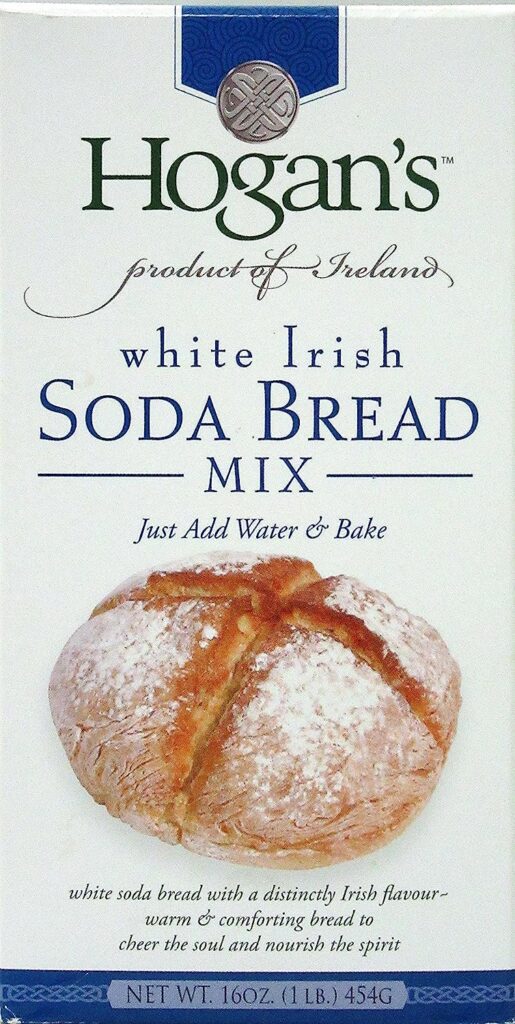
The History of Irish Soda Bread



Origins and Ancient Roots
In exploring the ancient roots of Irish soda bread, we uncover a culinary tradition deeply intertwined with the history and culture of Ireland. Dating back to early Celtic times, baking held a central place in Irish daily life, providing sustenance and nourishment to communities across the island.
The earliest iterations of soda bread were rudimentary creations, born out of necessity and resourcefulness. Crafted from simple ingredients like flour, salt, and water, these unleavened loaves were baked over open flames or hot stones, a testament to the ingenuity of early Irish bakers.
As agricultural practices advanced and wheat cultivation gained prominence in Ireland, the recipe for soda bread evolved to reflect the changing landscape. Buttermilk, a byproduct of dairy farming, soon became a staple ingredient, lending its distinctive tangy flavor and creamy texture to the bread.
In addition to buttermilk, oats and even potatoes found their way into soda bread dough, further enriching its taste and texture. These humble ingredients not only added nutritional value but also imparted a rustic charm to the bread, making it a comforting and satisfying staple of the Irish diet.
Despite its humble origins, soda bread quickly gained popularity and became a ubiquitous presence in Irish households. Its simplicity and versatility made it an ideal accompaniment to meals, while its hearty flavor and dense crumb ensured it could stand alone as a satisfying snack or meal.
Through its evolution, from simple unleavened loaves to the beloved brown soda bread enjoyed today, Irish soda bread remains a testament to the resourcefulness, resilience, and creativity of the Irish people.
Evolution and Adaptation
In delving into the evolution and adaptation of Irish soda bread, we uncover a rich tapestry of culinary history shaped by economic shifts, cultural influences, and the resilience of the Irish people. Throughout the 19th and 20th centuries, as Ireland grappled with economic hardship and mass emigration, soda bread remained a steadfast presence in Irish households, offering sustenance and comfort during times of adversity.
As Irish immigrants traversed the globe in search of new opportunities, they carried with them the cherished recipe for soda bread, adapting it to suit their surroundings and the ingredients available to them. In America, where wheat flour was more abundant than in Ireland, soda bread took on a lighter texture and sweeter flavor, reflecting the culinary preferences of the new land.
Meanwhile, back in Ireland, traditional soda bread recipes continued to evolve, influenced by regional variations and cultural traditions. In the southern counties, where dairy farming was prevalent, buttermilk remained a key ingredient, imparting its signature tangy flavor to the bread. In the northern regions, where oats were abundant, oatmeal soda bread emerged as a hearty and wholesome alternative.
Throughout this period of change and adaptation, soda bread remained a symbol of Irish identity and resilience, cherished for its simplicity, versatility, and comforting flavor. Whether enjoyed as a humble accompaniment to a bowl of stew or as a decadent treat slathered in butter and jam, soda bread continued to hold a special place in the hearts and homes of the Irish people.
As we explore the evolution of Irish soda bread, we gain a deeper appreciation for its enduring legacy and its ability to adapt and thrive in an ever-changing world. From its humble origins to its global influence, soda bread remains a beloved symbol of Irish culinary heritage, embodying the spirit of resilience and resourcefulness that defines the Irish people.
Modern Revival and Global Appeal
In exploring the modern revival and global appeal of Irish soda bread, we uncover a resurgence of interest in this iconic staple of Irish cuisine, driven by a renewed appreciation for artisanal baking, traditional cooking methods, and the rustic flavors of farmhouse fare. While soda bread has long been a cherished part of Irish culinary heritage, its recent resurgence has seen it catapulted into the spotlight once again, captivating the palates of home bakers and food enthusiasts around the world.
At the heart of soda bread’s enduring appeal lies its simplicity and versatility. With just a handful of basic ingredients – flour, baking soda, salt, and buttermilk – it’s a bread that can be whipped up in a matter of minutes, requiring no kneading or proofing. This accessibility has made soda bread a favorite among busy home cooks looking to create delicious, homemade bread without the fuss.
But it’s not just the ease of preparation that has endeared soda bread to a new generation of bakers. Its rustic charm and hearty flavor have also made it a hit among those seeking a return to traditional, wholesome cooking. In an age of mass-produced, factory-made foods, soda bread stands out as a symbol of authenticity and connection to the land, evoking images of cozy kitchens, warm hearths, and simple pleasures.
Beyond its traditional form, soda bread has also inspired a wave of creativity in the kitchen, with home cooks and professional chefs alike experimenting with new variations and innovative recipes. From sweet to savory, soda bread lends itself to endless possibilities, whether it’s used as a base for sandwiches, toasted and topped with avocado, or served alongside a hearty Irish stew.
As soda bread continues to enjoy a resurgence in popularity, its appeal transcends borders and cultures, bringing people together through a shared love of good food and timeless traditions. Whether enjoyed as a humble accompaniment to a meal or as the star of the show in a creative culinary creation, Irish soda bread remains a beloved symbol of Ireland’s rich culinary heritage, celebrated for its simplicity, versatility, and timeless appeal.


